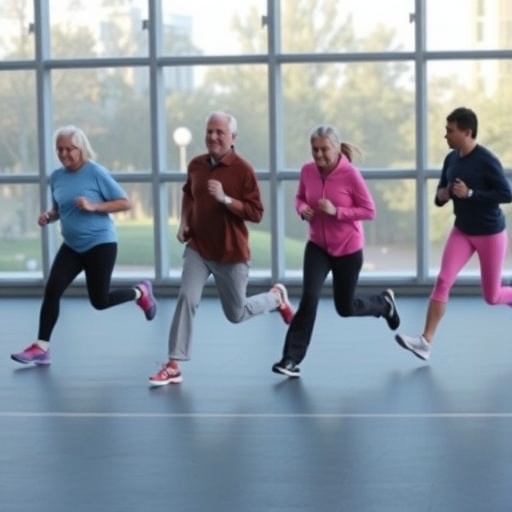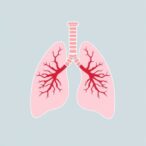
In the relentless battle against Parkinson’s disease, a neurodegenerative disorder characterized primarily by motor dysfunction, emerging research is shedding light on novel approaches that may hold the key to preserving motor abilities in patients. A pioneering pilot study conducted by Asendorf, Guerra, Dzialas, and colleagues, recently published in npj Parkinson’s Disease, proposes a captivating link between physical activity and the brain’s network resilience — termed network attack tolerance — as pivotal factors in safeguarding motor function. This multifaceted investigation challenges traditional therapeutic paradigms and offers fresh perspectives into how maintaining an active lifestyle could intertwine with the brain’s intrinsic network dynamics to counteract the progressive motor impairments typically associated with Parkinson’s disease.
Parkinson’s disease (PD), affecting millions worldwide, is hallmarked by a deterioration of dopaminergic neurons in the substantia nigra pars compacta, creating downstream disruptions in motor control circuits. The resultant symptoms—tremors, bradykinesia, rigidity, and postural instability—significantly impair daily functioning and quality of life. Although pharmacological interventions like levodopa provide symptomatic relief, they do not prevent the progressive loss of neural integrity. In this context, the exploration of physical activity as a neuroprotective mechanism has garnered growing attention. The study by Asendorf et al. delves into the interaction between physical activity and the brain’s network architecture—specifically, the notion of network attack tolerance—to elucidate how these factors converge to preserve motor function.
Network attack tolerance refers to the brain’s capacity to maintain functional connectivity despite targeted disruptions or ‘attacks’ on critical nodes within its neural networks. The brain’s connectome is a complex web of interconnected regions, and its resilience—akin to robustness in engineering systems—can influence susceptibility to neurodegeneration. In PD, progressive neuronal loss threatens network integrity, potentially accelerating functional decline. The researchers propose that sustained physical activity may enhance network attack tolerance, thereby bolstering the brain’s resilience to degenerative assaults. This hypothesis emerges from recent advances in network neuroscience revealing that not all brain regions contribute equally to overall connectivity; some nodes act as hubs whose integrity is crucial to maintaining coherent network function under stress.
.adsslot_YJLapeIDN4{ width:728px !important; height:90px !important; }
@media (max-width:1199px) { .adsslot_YJLapeIDN4{ width:468px !important; height:60px !important; } }
@media (max-width:767px) { .adsslot_YJLapeIDN4{ width:320px !important; height:50px !important; } }
ADVERTISEMENT
In conducting their pilot study, the authors utilized a multidisciplinary approach, combining clinical assessments of motor function with advanced neuroimaging and network analysis techniques. Participants diagnosed with Parkinson’s disease were stratified according to their baseline physical activity levels, and their brain network properties were evaluated through functional magnetic resonance imaging (fMRI). Using graph theoretical metrics, such as node degree, betweenness centrality, and network efficiency, the researchers quantified the vulnerability and resilience of individual connectomes. The relationship between physical activity, network robustness, and motor performance was then statistically analyzed to discern underlying patterns.
The findings from this investigative effort were striking. Individuals engaged in regular, moderate to vigorous physical activity exhibited better-preserved motor function despite the presence of Parkinson’s pathology. Neuroimaging data revealed that these subjects had enhanced network attack tolerance, characterized by stronger and more resilient hub connectivity within motor-related circuits. These neurofunctional signatures corresponded with superior scores on movement assessments like the Unified Parkinson’s Disease Rating Scale (UPDRS). The study also highlighted that physical activity promoted compensatory network reorganization, suggesting that the brain may recruit alternative pathways to mitigate functional losses in response to neuronal damage.
One of the fascinating aspects illuminated by the study is the bidirectional relationship between physical activity and brain network dynamics. While exercise appears to strengthen network robustness, resilient networks themselves may facilitate more efficient motor control, enabling patients to maintain higher levels of activity. This reciprocal interaction forms a positive feedback loop that could decelerate the progression of motor symptoms. Moreover, the results implicate that network attack tolerance may serve as a biomarker for therapeutic efficacy, guiding personalized interventions that combine physical training with pharmacological strategies.
The mechanisms underpinning these network-level benefits likely involve a confluence of neurobiological processes. Exercise-induced neuroplasticity, encompassing synaptogenesis, angiogenesis, and neurotrophic factor release (such as brain-derived neurotrophic factor, BDNF), enhances neuronal survival and connectivity. At the macro scale, this translates into improved functional integration and segregation of brain networks. Importantly, the study suggests that targeting network resilience could amplify these gains by safeguarding key hubs against neurodegenerative insults. Such insights open untapped avenues for designing adaptive rehabilitation protocols that optimize brain network dynamics.
Critically, the pilot nature of the investigation underscores the need for larger, longitudinal studies to validate and expand these promising findings. The authors acknowledge limitations including a modest sample size and the cross-sectional design, which constrain causal inferences. Nonetheless, the integration of sophisticated network analysis paradigms represents a state-of-the-art methodological advance that enriches our understanding of Parkinson’s complex neurobiology. Future research directions may involve exploring how distinct types of physical activity—such as aerobic exercise, resistance training, or dance therapy—differentially impact network attack tolerance and clinical outcomes.
The societal implications of this research could be profound. Parkinson’s disease afflicts aging populations globally, exerting immense healthcare and economic burdens. Uncovering scalable, non-pharmacological interventions that harness the brain’s own resilience mechanisms is vitally important. Exercise programs tailored to enhance network robustness may become accessible adjuncts to standard care, leading to improved patient autonomy and reduced progression rates. Additionally, integrating network neuroscience metrics into clinical practice could facilitate early identification of individuals at risk of rapid decline, enabling proactive management.
A deeper appreciation of brain network attack tolerance revolutionizes the traditional view of neurodegeneration, which often focuses solely on cell loss and neurotransmitter deficits. By conceptualizing the brain as a dynamic, resilient system capable of reorganizing and adapting to pathology, this study inspires a paradigm shift toward systems-level therapeutic modeling. Physical activity emerges not merely as a lifestyle recommendation but as a potent modulator of network integrity with tangible clinical relevance. This represents a crucial step toward holistic, precision medicine approaches in neurodegenerative diseases.
Furthermore, these findings align with broader trends highlighting the importance of integrative neuroscience in unraveling complex diseases like Parkinson’s. They dovetail with growing evidence that physical exercise stimulates systemic physiological benefits extending beyond the nervous system, including cardiovascular health and metabolic regulation. The interplay of peripheral and central factors likely converges to influence network resilience, underscoring the multifactorial nature of disease modification through lifestyle interventions.
Intriguingly, the concept of network attack tolerance holds potential translational value beyond Parkinson’s disease. Similar frameworks could be applied to other neurodegenerative disorders such as Alzheimer’s disease, multiple sclerosis, or amyotrophic lateral sclerosis, where progressive disconnection plays a pivotal role. Expanding research into network resilience might reveal universal principles of neuroprotection applicable across diverse pathologies, guiding the development of innovative cross-disease therapeutic strategies.
In summary, this trailblazing pilot study by Asendorf and colleagues illuminates the potent synergy between physical activity and brain network resilience in preserving motor function amidst Parkinson’s disease. The convergence of clinical neurology, neuroimaging, and network science enriches our comprehension of disease mechanisms and unearths transformative possibilities for intervention. As this compelling narrative develops through future research, enhancing network attack tolerance through targeted physical activity stands poised to become a cornerstone of Parkinson’s disease management.
The promise of sustaining motor capabilities and improving life quality in Parkinson’s patients thus hinges on embracing the brain’s complex network architecture and harnessing the restorative power of physical exercise. This endeavor exemplifies how merging cutting-edge neuroscience with actionable lifestyle modifications can inspire new hope in the fight against debilitating neurodegeneration, potentially changing the landscape of treatment for millions worldwide.
Subject of Research: Physical activity’s effect on brain network resilience and preservation of motor function in Parkinson’s disease.
Article Title: Physical activity and network attack tolerance preserve motor function in Parkinson’s disease: A pilot study.
Article References:
Asendorf, A.L., Guerra, E., Dzialas, V. et al. Physical activity and network attack tolerance preserve motor function in Parkinson’s disease: A pilot study. npj Parkinsons Dis. 11, 183 (2025). https://doi.org/10.1038/s41531-025-01033-9
Image Credits: AI Generated
Tags: dopamine neuron preservation strategiesexercise as a treatment for motor dysfunctionimpact of exercise on motor controlmotor function improvement in Parkinson’snetwork resilience in neurodegenerative disordersneuroprotective mechanisms in PDnovel research on Parkinson’s treatmentphysical activity and brain healthphysical activity and Parkinson’s diseasepilot study on exercise and PDquality of life in Parkinson’s patientstherapeutic approaches for Parkinson’s disease



